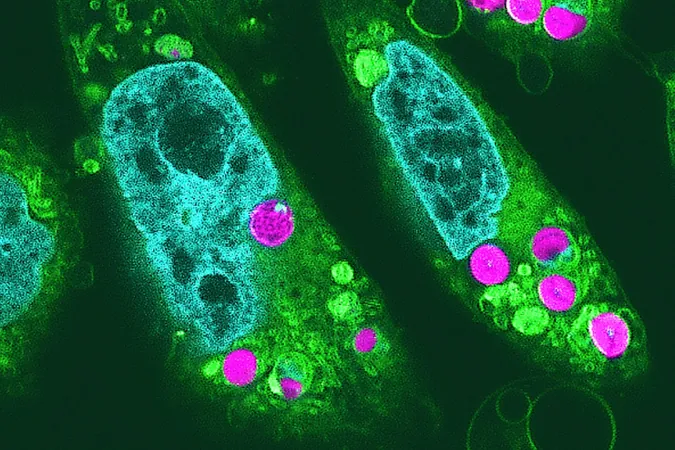
Breakthrough Discovery: A New Pathway to Quantum Spin Liquid Materials!
2024-11-19
Author: Sophie
Breakthrough Discovery: A New Pathway to Quantum Spin Liquid Materials!
Exciting advancements have emerged from researchers at the University of Birmingham, who have uncovered a groundbreaking route to creating “Quantum Spin Liquid” materials, an elusive state of matter that scientists have sought to understand for decades. Their study, published in Nature Communications, highlights a unique material based on ruthenium that meets the criteria for the elusive Kitaev quantum spin liquid state.
Quantum spin liquids possess extraordinary magnetic properties that defy conventional physics and offer promising applications in quantum technologies. Unlike traditional ferromagnets, which align their electrons and produce a consistent magnetic direction, these new materials open doors to magnetic behaviors that are far more complex and intriguing.
Lead researcher Dr. Lucy Clark emphasized the significance of their findings: “This work is a vital step in our quest to engineer materials that probe the intricacies of quantum states. It reveals a previously underexplored family of materials that could provide vital insights for developing new magnetic properties with revolutionary applications in quantum mechanics.”
Historically, although several naturally occurring minerals have been suspected to exhibit quantum spin liquid states, their intricate structures have posed significant challenges for verification. Theoretical modelling of quantum spin liquids presents its own difficulties due to competing magnetic interactions that are tough to disentangle, resulting in ongoing debates among physicists.
The foundational principles put forth in a 2009 model by Alexei Kitaev provided insights but revealed the need for experimental environments that were previously unattainable without solid materials falling back into ordered magnetic states. This behavior has mostly been attributed to densely packed crystal structures that hinder the desired quantum properties.
However, the Birmingham team has employed cutting-edge instruments from the UK's ISIS Neutron and Muon Source and Diamond Light Source to identify a novel ruthenium-based material boasting an open framework structure. This architectural design allows researchers to manipulate the interactions among ruthenium ions, thereby creating a pathway to the Kitaev quantum spin liquid state.
The researchers noted that the magnetic interactions within this open structure are relatively weaker, granting scientists the flexibility to fine-tune its precise behaviors more effectively.
“While we haven’t achieved a perfect Kitaev material yet, this research serves as a meaningful bridge between theoretical frameworks and practical experimentation, paving the way for further exploration in this exciting field,” Dr. Clark added.
The implications of this breakthrough extend beyond the lab, as the understanding and engineering of quantum materials can lead to revolutionary advancements in technology, including quantum computing, advanced materials science, and other high-tech applications.
Keep an eye on this research area, as ongoing developments hold the key to a future where quantum technologies might redefine our interaction with the physical world!









 Brasil (PT)
Brasil (PT)
 Canada (EN)
Canada (EN)
 Chile (ES)
Chile (ES)
 España (ES)
España (ES)
 France (FR)
France (FR)
 Hong Kong (EN)
Hong Kong (EN)
 Italia (IT)
Italia (IT)
 日本 (JA)
日本 (JA)
 Magyarország (HU)
Magyarország (HU)
 Norge (NO)
Norge (NO)
 Polska (PL)
Polska (PL)
 Schweiz (DE)
Schweiz (DE)
 Singapore (EN)
Singapore (EN)
 Sverige (SV)
Sverige (SV)
 Suomi (FI)
Suomi (FI)
 Türkiye (TR)
Türkiye (TR)